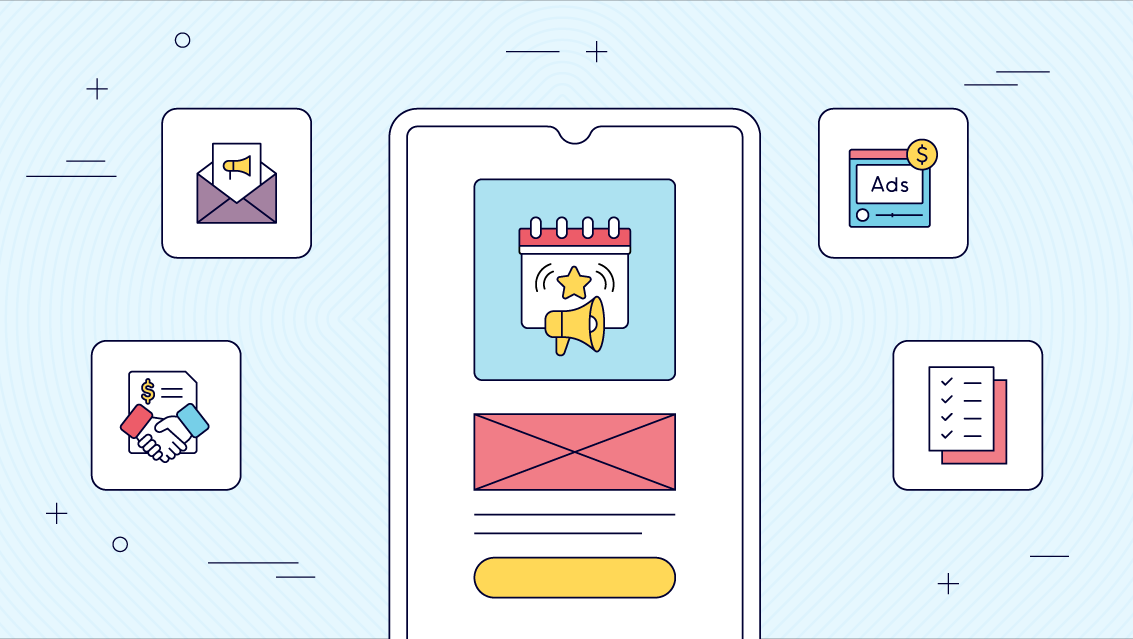20+ Ideas for Boosting Attendee Engagement

Lisa Broom | Head of Marketing

Nothing measures the success of an event better than attendee engagement. Engaged attendees are more likely to have a positive experience, participate actively, and become repeat participants. So, you need to prioritize corporate event planning and emphasize engagement all along the way.
But do you know how to engage attendees?
Don’t worry. You will soon.
This guide provides over 20 innovative ideas to enhance attendee engagement at your next event, ensuring it stands out and meets its objectives.
Key Takeaways
- Attendee engagement is the primary driver of impact and ensures the success of the event long-term.
- There are many tools and apps available to improve engagement, and this is a vital way to connect with attendees in the 21st century.
- Engagement is something that needs to happen pre-event, on-site, and post-event.
- The only way to improve attendee engagement is by measuring it and analyzing the results.
Understanding Attendee Engagement
What is Attendee Engagement?
Attendee engagement refers to the level of participation, interaction, and emotional connection people have with the event and its content. It encompasses their involvement in sessions, activities, and networking opportunities.
A highly engaged attendee is not only present physically but is also actively participating, asking questions, contributing to discussions, and networking with other participants.
Engagement also includes how attendees interact with event technology, such as mobile apps and virtual platforms, and their overall satisfaction and emotional connection with the event experience.
Why is Attendee Engagement Crucial?
Before we figure out how to increase attendee engagement, we need to take time seeing why it’s crucial. Engaged attendees are more likely to:
- Enhanced learning and retention: When attendees are engaged, they are more attentive and focused, which improves their ability to absorb and retain information. This is particularly important for educational events, training sessions, and conferences that aim to impart knowledge or skills.
- Increased participation: Engaged attendees are more likely to participate in various activities, such as workshops, Q&A sessions, and networking opportunities. This active participation not only enriches their experience but also contributes to the overall success of the event by creating a dynamic and interactive environment.
- Valuable feedback: Engaged attendees are more inclined to provide detailed and constructive feedback. This feedback is invaluable for event organizers as it highlights what worked well and what areas need improvement. By analyzing this feedback, organizers can make informed decisions and enhance the quality of future events.
- Return and recommend: Events that successfully engage attendees are more likely to see higher return rates. Satisfied attendees are not only more likely to return for future events, but they are also more likely to recommend the event to colleagues and peers. This word-of-mouth promotion can significantly increase the event’s reach and reputation.
- Emotional connection: Engagement fosters an emotional connection between attendees and the event. This connection can lead to a more memorable experience, as attendees feel personally invested in the event. Emotional connections also enhance brand loyalty and long-term relationships with attendees.
- Networking opportunities: Engaged attendees are more proactive in networking, which is a key objective for many corporate events. They are more likely to initiate conversations, participate in networking activities, and build meaningful connections with other attendees, speakers, and sponsors.
- Better ROI: For event organizers and sponsors, higher attendee engagement translates to a better return on investment (ROI). Engaged attendees are more likely to interact with sponsors, participate in activities, and utilize event resources, providing greater value to all stakeholders involved.
Types of Attendee Engagement

Content Engagement
- Interactive Sessions: Encourage Q&A, polls, and discussions.
- Live Demos: Showcase products or services in real-time.
- Workshops: Hands-on sessions to deepen understanding.
Networking Engagement
- Networking Mixers: Informal gatherings to foster connections.
- Speed Networking: Quick, structured networking sessions.
- Discussion Groups: Focused groups on specific topics.
Technology Engagement
- Event Apps: Use apps for schedules, networking, and updates.
- Virtual Reality: VR experiences for virtual venue tours or product demos. This is especially crucial for virtual attendee engagement.
- Live Streaming: Engage virtual attendees in real-time.
Organizer-Attendee Communication
- Push Notifications: Keep attendees informed with real-time updates.
- Chatbots: Provide instant answers to attendee queries.
- Surveys and Feedback Forms: Collect attendee opinions and suggestions.
Tools to Improve Attendee Engagement

There is really no end of individual tools that can help with different aspects of attendee engagement. As we’ll see below, they range from offering the fun of gamification to running interactive websites. They all serve a role to improve attendee engagement in events.
If you are looking for more comprehensive events solutions, Fliplet is what you are looking for. Simple yet dynamic, it gives you a single app that can support the entire process.
Below, we’ll look at the specific ways tools like Fliplet help your event engagement.
Apps for Enhancing Engagement
Event apps can significantly boost engagement by offering features such as:
- Fliplet: Comprehensive event management, customizable interactive agendas, networking tools, and gamification.
- Whova: Facilitates networking through community boards and in-app messaging, and provides interactive agendas.
- EventMobi: Offers live polling, surveys, and gamification features to enhance attendee engagement.
- Attendify: Focuses on networking with attendee profiles, messaging, and social media integration.
- Slido: Enables live Q&A, polling, and audience interaction during sessions.
The specific needs of your event will always determine what you select as the right tool. For instance, you may want to narrow-focus on a great retreat app to help participants engage with a multi-day destination event.
Communication Between Organizers and Attendees
Effective communication is key to engaging attendees:
- Fliplet: Provides a centralized platform for event information, updates, and attendee communication.
- Mailchimp: Send personalized email campaigns for invitations, reminders, and updates.
- Hootsuite: Manage and schedule social media posts across multiple platforms to promote interaction and share real-time updates.
- Eventbrite: Centralize event information and provide a single point of reference for attendees.
- Buffer: Schedule social media content and analyze performance to engage with your audience effectively.
For a broader range of tools, you can also explore the best mobile event apps and conference apps.
Practical Tips for Effective Use of Engagement Tools
- Regular Updates: Keep content fresh and relevant.
- User-Friendly Interface: Ensure tools are easy to navigate.
- Incentives: Offer rewards for participation, such as exclusive content or discounts.
20+ Ideas for Boosting Attendee Engagement
Below, we’ve assembled the best attendee engagement ideas, with sections aimed at every part of an event—from the lead-up to the event itself and even the follow-through.
These attendee engagement tips frequently include technological solutions, but they are relevant to all kinds of events.
Pre-Event Strategies

- Identify Key Performance Indicators: Define metrics to measure success. This could include registration numbers, social media engagement, attendee satisfaction scores, and return on investment (ROI). By setting clear KPIs, you can track progress and evaluate the effectiveness of your event.
- Develop Engaging Content: Create relevant and valuable content for attendees. This could be in the form of informative sessions, interactive workshops, and engaging keynote speeches. Content should be tailored to the interests and needs of your audience to keep them engaged and informed.
- Use Social Media Campaigns: Build excitement and anticipation through targeted social media campaigns. Share teasers, updates, and interactive posts to engage your audience before the event. Use platforms like LinkedIn, Twitter, and Instagram to reach a broader audience and encourage participation.
- Send Personalized Invitations: Make attendees feel valued by sending personalized invitations. Use their names and reference past interactions to create a sense of connection and importance. Personalized communication can increase registration rates and enhance attendee satisfaction.
- Offer Early Bird Discounts: Encourage early registrations by offering discounts to those who sign up in advance. Early bird discounts can create a sense of urgency and reward early commitment, helping to secure a baseline number of attendees early in the planning process.
On-Site Event Strategies

- Prioritize User Satisfaction: Ensure all aspects of the event cater to attendee needs. This includes providing clear signage, accessible facilities, quality catering, and responsive support staff. Prioritizing attendee satisfaction can enhance their overall experience and encourage positive feedback.
- Allow Attendees to Customize Their Experience: Offer personalized agendas and activities. Allow attendees to choose sessions, workshops, and networking opportunities that interest them most. Customization can increase engagement by ensuring that attendees participate in events that are most relevant to them.
- Incorporate a Digital Feedback System: Collect real-time feedback during the event using digital tools such as mobile apps or online surveys. This immediate feedback can help you address issues promptly and improve the attendee experience on the spot.
- Vary Formats with Shorter Sessions: Keep content dynamic and engaging by varying the format and length of sessions. Incorporate shorter, more focused presentations alongside longer workshops to maintain attendee interest and accommodate different learning styles.
- Consider Your Virtual Audience: Engage remote attendees through live streams and interactive tools. Provide virtual attendees with opportunities to participate in Q&A sessions, polls, and networking activities to ensure they feel included and engaged.
- Host Interactive Workshops: Provide hands-on learning experiences through interactive workshops. These sessions should encourage active participation and practical application of knowledge, making the content more engaging and memorable.
- Create Networking Zones: Designate areas for informal interactions to facilitate networking. Provide comfortable and accessible spaces where attendees can relax, chat, and make new connections outside of formal sessions.
- Use Gamification: Introduce games and challenges with rewards to keep the excitement levels high. Gamification can motivate attendees to participate more actively and engage with the event content in a fun and interactive way.
- Leverage AR and VR: Enhance the attendee experience with immersive technologies such as augmented reality (AR) and virtual reality (VR). These technologies can create unique and memorable experiences, from virtual tours to interactive exhibits. This radically improves virtual attendee engagement.
- Facilitate Q&A Sessions: Use apps or social media for questions and answers. This can make Q&A sessions more efficient and inclusive, allowing more attendees to participate and get their questions addressed.
- Organize Contests and Giveaways: Keep the excitement levels high by organizing contests and giveaways. Offer attractive prizes to encourage participation and engagement throughout the event.
- Provide Comfortable Spaces: Ensure venues are conducive to interaction and comfort. Comfortable seating, adequate lighting, and quiet areas for relaxation can enhance the attendee experience and encourage more meaningful interactions.
Post-Event Strategies

- Share Event Highlights: Post photos, videos, and event summaries on social media and the event website. Sharing highlights can keep the event alive in attendees’ minds and reach those who couldn’t attend.
- Follow-up With Personalized Thank-You Messages: Show appreciation and maintain engagement by sending personalized thank-you messages. Acknowledge attendees’ participation and share any follow-up actions or additional resources.
- Analyze Feedback: Use insights from feedback to improve future events. Analyzing feedback helps identify strengths and areas for improvement, ensuring each event is better than the last.
- Continue the Conversation: Keep engaging attendees through social media and newsletters. Share industry news, upcoming events, and valuable content to maintain a connection with your audience.
- Offer Exclusive Content: Provide additional resources or recordings of sessions to attendees. Exclusive content can add value to the event experience and keep attendees engaged post-event.
- Announce Future Events: Build anticipation for upcoming events by announcing them early. Provide details and incentives for early registration to keep the momentum going and ensure continued engagement.
Measuring and Analyzing Audience Engagement
Key Metrics and Tools
- Attendance Rates: Measure the number of attendees versus registrations.
- Session Participation: Track engagement in individual sessions.
- Feedback Scores: Collect attendees’ ratings and reviews, polls, and surveys.
- Social Media Interaction: Monitor likes, shares, and comments.
- App Activity: See if attendees are using your app, and focus on the most popular features.
- Networking: Look at the new connections formed over the course of the event, which some networking apps allow for.
How to Generate an Attendee Engagement Report
Generating a comprehensive attendee engagement report involves:
- Collecting Data: Gather data from surveys, apps, and social media.
- Analyzing Trends: Identify patterns in attendee behavior and preferences.
- Presenting Insights: Use visual aids like graphs and charts to illustrate findings.
The Role of Feedback in Boosting Audience Engagement
Gathering real-time feedback is necessary to improve attendee engagement in events:
- Immediate Improvements: Address issues as they arise.
- Post-Event Analysis: Understand overall satisfaction and areas for improvement.
- Building Relationships: Show attendees that their opinions matter.
Take Action and Transform Your Attendee Engagement with Fliplet
Ready to take your attendee engagement to the next level? Fliplet offers powerful event solutions to help you plan, execute, and analyze events effectively. Explore our range of tools designed to enhance engagement and ensure the success of your events.
FAQs
How Can Attendee Engagement Apps Enhance Event Experiences?
Attendee engagement apps offer features like personalized agendas, networking tools, and real-time updates, enhancing the overall event experience.
What Are the Key Metrics for Measuring Attendee Engagement?
Key metrics include attendance rates, session participation, feedback scores, and social media interaction.
What Are the Advantages of Using Event Apps?
Event apps streamline communication, enhance networking, and provide interactive features that boost attendee engagement.
How Does Audience Feedback Contribute to Event Success?
Audience feedback helps identify strengths and areas for improvement, ensuring future events are more successful and better aligned with attendee expectations.
How to Engage Attendees in an Event?
Engage attendees with interactive sessions, personalized experiences, and real-time communication tools.
What is Audience Engagement?
Audience engagement refers to the level of interaction and emotional connection attendees have with the event and its content.
What is the Audience Engagement of an Event?
Audience engagement measures how actively and emotionally involved attendees are with the event, impacting their overall experience and satisfaction.




